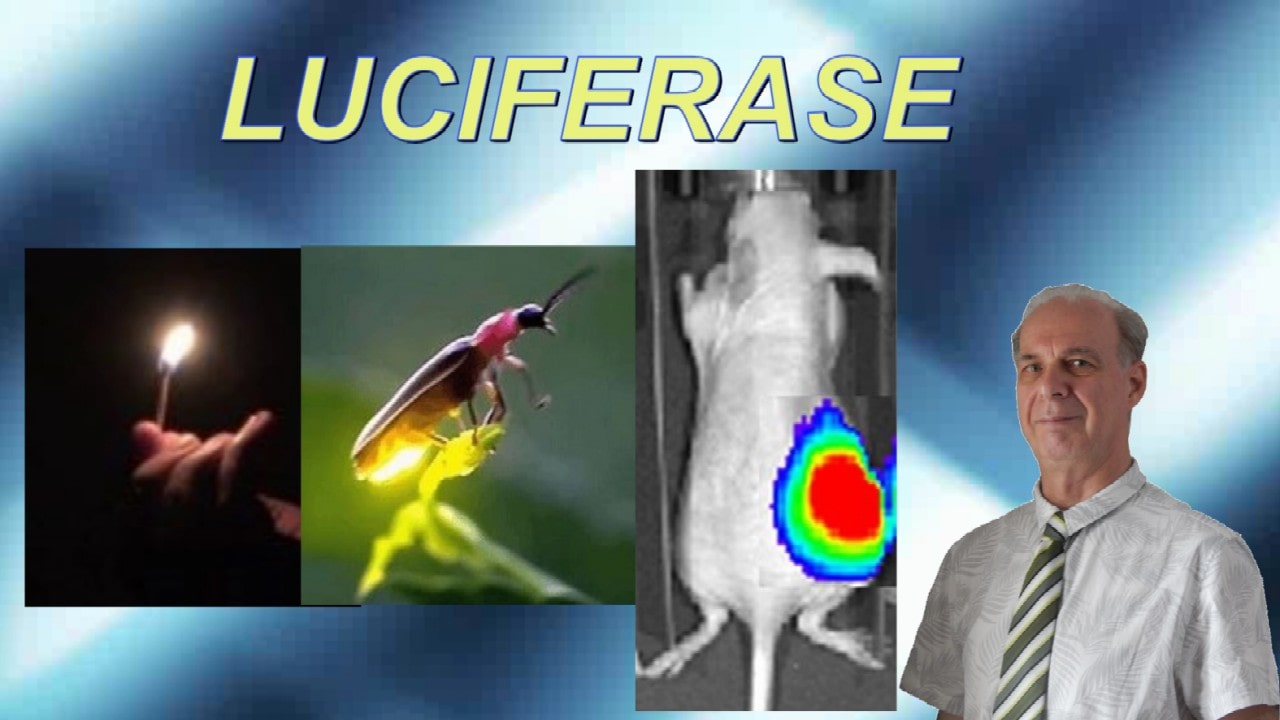What is Luciferase?

Luciferase is a generic name for a class of enzymes that usually provide bioluminescence in nature. The name is derived from Lucifer, which means "light carrier". The best-known example is a luciferase from the firefly Photinus pyralis.
Luciferase is an enzyme used for bioluminescence by various organisms in nature, most famously the firefly. The scientist produces a construct in which the regulatory region of a target gene is fused with the DNA coding sequence for luciferase.
The small size of luciferin also makes it a poor antigen and immune responses to luciferin are unlikely. Luciferin is able to pass the blood brain barrier, the blood placenta barrier and the blood testis barrier, toxicity appears low.
P. Riggs, in Brenner's Encyclopedia of Genetics (Second Edition), 2013
Luciferases are enzymes that produce light when they oxidize their substrate. The gene for the most common luciferase comes from the firefly, but luciferases from other animals such as the sea pansy Renilla reniformis, the copepod Gaussia princeps, and the ostracod Cypridina noctiluca are also used as reporters. When a luciferase is fused to a protein of interest, its expression can be measured very accurately using a luminometer. The firefly luciferase reaction requires its substrate luciferin, plus adenosine triphosphate (ATP), O2, and Mg2+. The Renilla and Gaussia luciferases use coelenterazine as their substrates; Cypridina uses its own luciferin as a substrate. Luciferases are commonly used to report the expression level of proteins to which they are fused.
A. Kimura, E. Kobayashi, in Encyclopedia of Neuroscience, 2009
Luciferases comprise a group of enzymes that emit light in the presence of oxygen and a substrate (luciferin). Such a luciferin–luciferase system is found in nature, for example, in bacteria (Vibrio harveyi), dinoflagellates (Gonycaulax), and the firefly (Photinus pyralis). These luciferases, in particular the eukaryotic firefly luciferase (Luc), have been commonly used as a light probe in a number of biological experiments, including promoter activity assays. Furthermore, thanks to recent advances in high-sensitivity photon-counting video cameras, a number of studies have employed Luc as a reporter gene in real-time noninvasive in vivo imaging. This in vivo imaging allows the visualization of the spatial and temporal behavior of Luc-expressing cells in living animals; for example, growth of tumor cells, trafficking of immune cells, and migration of transplanted cells. These imaging studies using Luc-labeled cells have offered new insights that could not have been gained using conventional histological approaches.
How does Luciferas test work?
Firefly luciferase is unstable in B. subtilis with a half-life of only ∼ 6 min. Thus the suitability of GFPmut3 (half-life of ∼ 10 h) and firefly luciferase (half-life or ∼ 6 min) for high-resolution kinetic analysis of promoter activity emanates from their contrasting stabilities in vivo.
Luciferases are enzymes that use a substrate called luciferin, along with oxygen and ATP, in an energetic process that produces light—like the yellow glow of fireflies. The power of luciferase has been harnessed by scientists to devise reactions whose light output is used to monitor biological processes including gene expression, biomolecular binding, and cell viability.
Here’s a few application notes on luciferase assays to aid in your COVID-19 vaccine research.
To perform a luciferase reporter assay, you will need a DNA plasmid to express the protein that you hypothesize could affect transcription.
You will also need to use another DNA plasmid with the regulatory element (or a target promoter region) fused with the DNA coding sequence for a luciferase enzyme. When activated, this system produces luciferase.
After cells are transfected with the luciferase reporter plasmid and allowed to grow for few days, the next steps are to lyse the cells, add a substrate to the cell lysate, and measure the luciferase activity based on the amount of bioluminescent signal.
A Luciferase Reporter Assay. The luciferase assay is useful to study whether a protein of interest regulates a particular gene at the transcription level. By transfection, a DNA construct with the gene’s promoter and a coding region of the luciferase reporter gene enters the cells. Another DNA construct introduced into the cells consists of a coding region of the protein of interest. When this protein activates transcription, the cell will produce luciferase enzyme. After the addition of a lysis buffer and a substrate, a luminometer quantifies the luciferase activity.